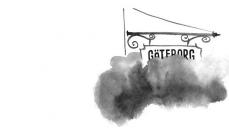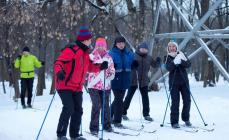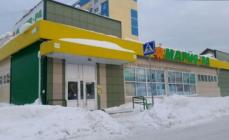The biggest stupidity that a tourist who comes to Stockholm can do is not to visit its unique metro. I know it myself! During my first visit to the city, Katya and I walked everywhere, and then we took the car. As a result, they did not look into the subway. Only two weeks later, I accidentally saw somewhere on LiveJournal photos of the grandiose stations of this underground system, which is called the longest art gallery in the world!
Don't repeat my mistake! Get ready to ride the Stockholm subway and just stare.
1
The metro system in Stockholm was opened in the 1950s. It consists of lines of three colors intersecting in the center of the city. True, each color branches into several separate routes in the suburbs, so if you need to go not to the center, then follow the final directions. All routes (there are seven of them) are also thought out - in this regard, the subway is similar to our New York one, where each color also represents several routes.
The system operates from 5 am to 1 am. You need to be careful with this in the summer, as the days here are very long. It seems that it has only gotten dark, and the subway has already stopped running.
2 From the outside, the stations do not look very remarkable. The symbol of the system is the letter "T" in a circle (in Swedish, the subway is called Tunnelbana, or " Railway in the tunnel.)
3 Today there are 100 stations in the system. Most of them look absolutely normal at the entrance, there is nothing special about them - turnstiles are like everywhere else. Approximately half of the stations are underground (mostly in the center), and the other half are above ground.
4 Going down the escalator, you can notice the transition from an ordinary station to an unusual one. See up there the tunnel is getting red and the ceiling is uneven?
5 This is the beginning of the cave. A certain number of Stockholm stations were decided to be hollowed out in stone, but not faced in any way, leaving rough stone walls and vaults, and only painting them.
6 Such stops are the most beautiful and unique. Personally, I have never seen anything like it.
7 Each of the stations has its own predominant color and its own coloring system.
8 There are some very colorful ones!
9 The easiest way to see such a "cave" is at the central stop, T-Centralen. The main thing is to go down to the lower level, where the blue line trains run.
10 Photographers love to shoot station escalators - their smooth metal harmonizes interestingly with the surrounding rough stone.
11 Beauty!
12 Another central station.
13 A whole ancient city was built on Kungsträdgården.
14 The brand new blue carriages look great at this station. And it's good for others too.
15 But painted stone was not limited here. There are various art objects on many platforms.
16 Antique statues...
18 Ruins of non-existent cities...
19 Various miniatures.
20 There is even a miniature White House!
21 But someone left bronze shoes on the roof of the cave.
22 On T-Centralen, cave paintings depict workers building the subway.
23 Train on the Kungsträdgården platform.
24 There are simpler stations, although almost everywhere in the center they try to somehow decorate the platforms. That is why the Swedes talk about their subway as the longest gallery in the world.
25 Multicolored mosaics.
26 At the top level of T-Centralen, everything is simpler. That is why I never saw another cave station on my first visit! (Don't be like Leva!)
27 You will most likely come here from the airport anyway (local Aeroexpress comes to the central station). To admire the beauty, it is enough to go down to the lower level.
28 But in the Old City, the metro goes along the street, so there is no particular beauty at this stop (this is another reason why I didn’t see anything at first!)
29 There are very simple platforms. Hung with advertisements.
30 But even at such stations they hang out some kind of art.
31 And they present strange exhibits.
32 Bench of a strange shape.
33 Ticket machines. It's cheaper than buying them at the box office.
34 And in the supermarket you can buy an unlimited ticket for three days. The metro in Stockholm is not cheap, such a ticket costs about $30. But if you're going to do a lot of city riding, it might make sense. As a result, I didn’t run into its cost (we walked a lot).
35 The inside of the train looks like this:
36 The locals are extremely nice.
37 Conductor!
Have you been to the Stockholm metro? How are you? Outwardly, I liked it more than Moscow. (And there’s nothing to say about New York - it’s ugly with us,
Central Station(Centraal station, Central station) - central Train Station Amsterdam, but not only. This place can be called the main transport hub, where many human flows intersect.
Almost all tram lines start or end here. Nearby there are many bus stops, underground and water is a metro station.
On July 24, 2018, a new fifth metro line "North-South-Line" was opened in Amsterdam. This is the first underwater highway in Amsterdam. Its construction took 15 years, during which the work of the station did not stop for a day. Directly below the station building, this new metro line connected with the three already existing metro lines passing here.
The central station is located on the banks of the river IJ (IJ), where ferries moor to ferry passengers to the opposite bank.
Although the word "shore" here is very conditional - the building is almost completely located on the spot where the river IJ used to be. By the way, the name "IJ" comes from the ancient Germanic language and is not only the name of this particular river, but also the designation of water in general. The importance of water is so great in Dutch culture that IJ is a digraph, meaning one letter. Accordingly, both characters are capitalized.
Trains arrive at the Central Station from Schiphol Airport (almost all of them are in transit and go somewhere else in the Netherlands or to neighboring countries). Therefore, acquaintance with the city for most tourists begins with this building.
Leaving a little aside, it is worth saying that, in fact, there is another alternative and even more convenient way to get from the Airport - this is bus number 397. It is especially convenient if your hotel is located in or near the Leidseplein (Leiden Square).
Crowds of people at the Central Station are sometimes simply amazing. This is no coincidence, because few of the Dutch work and live in the same city.
Many live in neighboring cities such as Eidhoven, Delft and Leiden, Zaandam or Utrecht, but work in Amsterdam. Fortunately, trains in the Netherlands run very quickly and almost always on schedule. Therefore, you can get to them inexpensively (by European standards) and quickly.
How to buy a ticket in the Netherlands
Still, going aside, I will give a short instruction on how to buy a train ticket. It's not difficult at all. At Schiphall Airport, at the Central Station, there are many ticket terminals. You simply choose your starting and ending point and pay by card.
It should be borne in mind that you can pay with our popular Mastercard or Visa only in Amsterdam, the airport and, maybe, in others. major cities. At small stations and even in Rotterdam (!!!) payment is accepted only by Maestro card.
Therefore, if you are going to ride for one day in Zaanse Schans, Delft or another charming Dutch town, then buy a round-trip ticket right away (day return). For the sake of justice, it must be said that it is still possible to pay for a ticket with the indicated cards, but only at the box office, where there is often a queue, and at very small stations there are no ticket offices at all.
Having received a ticket, it must be attached to one of the terminals before boarding the train, as well as at the station where you arrived. At the central station, such terminals are impossible to miss, they look like turnstiles and are located in the underpass leading to the platforms, but are always open.
At small stations, such terminals are located on platforms, near the entrance, exit, start underpass and other places. Inexperienced tourists they often forget to attach their tickets, which may cause them to be considered invalid. Controllers on trains are rare, but the fines are large, so it’s not worth it to ride a “hare”.
Central station - brief description
The station building was built in 1889 according to the design of the Dutch architect Peter Kuipers, and Adolph Leonard van Gendt helped him. The building of the Central Station is one of the important architectural structures Amsterdam.
The soil on which the station was built was characterized by moisture and instability, so more than 8,000 piles were driven into the foundation during construction. The building is built of neo-Renaissance red brick and looks like fairytale castle or a palace.
The main entrance and two towers of the station complex protrude in front of the main building, which, according to the author's intention, creates the feeling of entering the "city gate". Look at the tower on the right, there is a clock on it, many guests of the city think that on the left there is also a clock, but apparently broken, because their hands are spinning all the time. In fact, this is a device that shows the direction of the wind, that is, a weather vane.
The towers of the station complex are decorated with bas-reliefs, and in the center of the facade there is the coat of arms of the Netherlands, the coats of arms of the cities with which there was a railway connection at the time of construction are depicted horizontally. The central spire acts as a kind of beacon.
The facade of the station faces the city, and from the back north side there are terminals for small ferries going to the opposite bank of the Ii River, and berths for river cruise ships.
Under the roof of the station there are 6 platforms and 15 railway tracks, there are also waiting rooms, shops and many cafes and restaurants.
On the way to the railway platforms, there are several cafes and shops selling sandwiches, coffee and light snacks that you can eat during the journey, fortunately, all the seats on the trains are equipped with comfortable tables.
As was customary in the 19th century, the waiting rooms were 1st, 2nd and 3rd class, decorated with varying degrees of comfort. The most privileged was the eastern wing of the building, which housed the Royal Hall for the most important persons.
On platform 2A, a first-class cafe has been preserved. Today it is available not only to first-class passengers, but to everyone. You don't need to buy a train ticket to visit it. You will be amazed by the luxurious interior, which is difficult to find even in very expensive restaurants. However, the menu of the cafe is quite decent, and the prices are reasonable (they correspond to the average restaurants in the city).
Also note the building above the first platformslightly away from central building standing on legs that seem very flimsy.
This is another masterpiece of construction in Amsterdam. This assignment contains an Ibis hotel. Incidentally, with comparative inexpensive prices and not noisy, despite the fact that the rooms are directly ABOVE the railway tracks (verified by my own experience). Breakfast takes place on the ground floor (on our first floor), and during the meal you can look into the windows of trains that stop "window to window".
To the left of the Central Station (if you look at the facade from the side of the city center) there is a three-story (!!!) bicycle parking, which becomes the object of numerous photo shoots and the backdrop for films.
Interestingly, the Tokyo delegation was so delighted with Amsterdam Central Station that later, in 1914, a railway station building similar to the Dutch one was built in Tokyo according to the project of the Japanese architect Tatsuno Kingo. Although, of course, Tokyo residents claim that their station is the one and only.
1. Paveletskaya (Zamoskvoretskaya line)
Probably all Muscovites are familiar with the metro station "Paveletskaya". Many used it, for example, when they went to Domodedovo Airport by Aeroexpress or went to the House of Music. And some even paid attention to the strange narrowing of the station closer to the exit, where a very spacious station turns into a narrow corridor between thick walls:

I can't even believe that these two photos were taken on the same platform. The solution to this design is simple. Ta "Paveletskaya", which we know is not at all the one that was built in the forties:

On the old "Paveletskaya" there was no central hall at all. Two long and narrow halls, similar to a pipe, connected only at the exit from the station. Three side arches on each side of the narrow corridor have been preserved to this day. Once upon a time, trains could only be accessed through them.

Both halls "Paveletskaya" were decorated with military-themed bas-reliefs and elegant benches. They have not survived to this day. In the fifties the station was completely rebuilt. A large central hall with columns was built, which united the entire station together with the former side halls in a single volume. "For memory" of the former station, we were left with only a small area with wide pylons and a narrow corridor near one of the exits.
2. Lubyanka
A similar incident happened with the station "Lubyanka"(then called "Dzerzhinskaya"). When the station was opened in 1935, it appeared to passengers in a completely different guise than we know it now:


Its design also consisted of two separate tube halls with platforms. The exit from these halls was at the end of the platform, into the small halls directly at the escalator:

In this form, the station managed to "act" in the movies. In film "Friends and Years" 1965 Camera rides the entire length of the station: YouTube link.
In the early seventies, the central hall was finally completed at the station. This completely changed the look of the station:

From the original project, only the facing of several pylons at the end of the station has survived to this day, which now differ sharply in appearance from the rest:

The same story happened with the station "Clean Ponds"(Then - "Kirovskaya").

Having descended the escalator, the passenger had to immediately turn left or right, since there was simply no central hall:

He appeared at the station in the seventies. A passage was made into it in every second niche of the side halls. True, unlike "Lubyanki" And "Paveletskaya", the design of the station remained practically unchanged:

So to the "disappeared" stations "Clean Ponds" can be added only with reservation.
current station "Sparrow Hills" valid since 2002:

Prior to that, for almost 20 years, the train had been passing over the bridge across the Moscow River without stopping. And even earlier, a completely different station was located here. She was called "Lenin's mountains" and looked like this:

This station has now remained only in memories, in photographs and in films. In 1983, due to the dilapidation of the bridge, it was closed.


Interestingly, the escalator gallery that operated next to the station "Lenin's mountains", with opening "Sparrow Hills" for some reason it was not restored:


5. pervomaska

Station "Pervomaska", opened in 1954, was one and a half kilometers from the current "May Day". At the time of construction, it was final. And right behind the station there were houses that did not allow to extend the line further. When it was decided to lead the Arbatsko-Pokrovskaya line further east, the station was turned into a depot, and trains were launched nearby, along an overpass above the former tracks. Trains still run on this overpass, and passengers can see the depot building from the train window:

That one "May Day" there was one vestibule for exiting passengers:

This vestibule has been preserved, it can be seen by everyone who walks through the courtyards on Pervomayskaya Street:

And inside the depot, individual elements of the design of the station have been preserved:

(photo by Alexander Popov)
In the future, perhaps in place of the former "May Day" museum will be set up.
6. Kaluga

Toy "Kaluga", which worked in the Moscow metro from 1964 to 1974, is now gone too. This station has also been turned into a depot. It was located on the surface, not far from the current "Kaluga":

The station was the terminal and many passengers used it, transferring here to buses and moving on. In 1974, the line was extended, and "Kaluga" She moved to a new location where she remains to this day.
Unlike "May Day", the passenger platform is preserved here:

(this and next photo - Alexandra Popova)
Looking at the depot from above, you can guess exactly where the former station was located:

Here they are, six "lost" stations. Perhaps someday their ranks will be replenished with living stations. Let's see.
Vorobyovy Gory (until May 12, 1999 Leninskiye Gory) is a station on the Sokolnicheskaya Line of the Moscow Metro. In my opinion, one of the most interesting stations of the Moscow metro.
The Leninskie Gory metro station was opened on January 12, 1959 as part of the section of the Sokolnicheskaya line "Sportivnaya" - "Universitet". To reduce the cost of construction, a unique project was used to lay the metro line along the metro bridge, instead of the previously proposed tunnel plan under the Moscow River. The station was located on the lower tier of the Luzhnetsky metro bridge (built in 1958), while car traffic was carried out along its upper tier.

Due to the rush to put the bridge into operation for the International Youth Festival, the construction standards were not observed to the end. The desire to minimize costs caused the replacement of metal supports with reinforced concrete ones, led to a number of errors when laying reinforcement in the frame of the structure, and also forced builders to use salt in order to speed up concreting. The fact is that salt lowers the freezing point of water, which was important, since the work was carried out in winter time. However, this contributed to the intense corrosion of the reinforcement elements.

In the spring, when the snow melted, the station was constantly flooded due to poor waterproofing. On July 8, 1959, a heavy downpour took place in Moscow, which almost paralyzed the work of the entire line: water mixed with mud penetrated directly into the trains. Then the ceiling began to collapse. Things got to the point that in June 1960, dural sheets of the cornice fell from a height of 4 meters. Then no one was hurt. Subsequently, longitudinal cracks began to appear in the concrete floors, which led to the final closure of the bridge for reconstruction.

The station reopened on December 14, 2002. In fact, it was completely rebuilt. The width of the station was increased by 3 meters, while it was decided to leave the platform part of the station on the old supports.

South lobby of the station.
The station has two lobbies. From the northern lobby (equipped with an escalator) you can go to the Luzhnetskaya embankment and the Luzhniki Olympic sports complex. From the southern vestibule you can go to Vorobyovskaya embankment (through the lower hall) and to the Vorobyovy Gory nature reserve (through the upper hall)

South lobby of the station.

Escalators of the southern vestibule of the station.

The design of the station is made in a modern style. The bridge supports passing through the hall, as well as the walls of the approach corridors, are lined with white and green marble. The floor is paved with gray granite.


This station is one of two metro exhibition grounds (along with the Metro gallery at the Vystavochnaya station).

The track walls are made transparent, the glasses are inserted into the aluminum frame. They offer a view of the Moscow River, Sparrow Hills, the Luzhniki Grand Sports Arena and the building of the Academy of Sciences.

The station is a "dangerous" station as there is no flume on the tracks.




Not far from the station in the natural reserve "Vorobyovy Gory" is located previously operating in 1959-1983. an escalator gallery, which served as the transfer of passengers from the metro and the park to Kosygin Street and back. The gallery was built according to a standard design at the same time as the station. It was equipped with a three-ribbon escalator and had two vestibules - the upper one (on Kosygin St.) and the lower one (in the park)

Shot from the film "Sunflowers" Cameraman Giuseppe Rotunno Photo from oldmos.ru
After the reconstruction of the station, due to problems with the technical calculation and lack of funding, the gallery was not restored. Now you can get to the station and Kosygin Street only on foot through the forest park, climbing the bypass paths or use the paid cable car, which is located far from the station This is how she looks now, but this is a separate post.
15. Which station is dedicated to the builders of the subway? "Komsomolskaya" Sokolnicheskaya line.
The station is named after the square on which its vestibule opens. Until 1932, the square was called Kalanchevskaya, but then it was renamed in honor of the Komsomol members - the builders of the subway (since 2003 it has been called the Three Stations Square). In addition to the name, two majolica panels are dedicated to the work of Komsomol metro builders, decorating the wall that completes the balcony gallery of the station (the galleries were needed to distinguish between incoming and outgoing passengers of a large transport hub of the city). Panel sketches were made by E. Lansere, an academician of painting since pre-revolutionary times, who was one of the leaders of the World of Art group. Panel "In the workshop of the machine-tractor station".

Mine sinking panel.

16.Which station has the most varied decorative finishes? Novokuznetskaya.

The station was built during the Great Patriotic War, as soon as the capital was no longer in danger.
It has become a monument to Russian weapons. The pylons of the station are decorated with powerful marble portals. Between them are massive marble benches with high backs and cantilevered armrests. In the central hall, on the axis of the portals, there are bronze floor lamps with lamps. They illuminate six smalt mosaic panels on the vault of the central hall. Mosaics based on the sketches of A. Deineka were collected by the artist V. Frolov, who was in besieged Leningrad. He died in 1942, and the mosaics were taken along Lake Ladoga. They were originally intended for the Paveletskaya station, but then the design of the station was changed, and the mosaics adorned the vault of Novokuznetskaya, replacing the sky, as at Mayakovskaya. Mosaic compositions are dedicated to peaceful life - "Skiers", "Aviators", "Builders", "Machine Builders", "Steelworkers", "Gardeners".

In the lower part of the vault, above the pylons, there is a plaster sculptural frieze depicting representatives of various branches of the Red Army: pilots, signalmen, tankers, infantrymen, cavalrymen, etc. Images of orders of the Patriotic War are inserted between them. On the inner walls of the travel halls there are bronze medallions with flags and portraits of the great Russian commanders: Alexander Nevsky, Dmitry Donskoy, Minin, Pozharsky, Suvorov and Kutuzov.

A marble panel is installed on the end wall of the central hall, reflecting the stages of development of the USSR. Six types of marble of the highest quality were used in the design of the station. As a result, the station turned out to be quite overloaded with details.
17. I continue the topic of stations built during the Great Patriotic War.
Many stations that were built during the Second World War acquired a military color in their design, although the initial projects were devoted to civilian life. First of all, the "unity of front and rear" was reflected.
For example, "Baumanskaya" is decorated with eight sculptures made of plaster, painted in bronze, located in the niches of the central hall ("Metrostroevka", "Red Army soldier with a banner", "Red Army soldier in a camouflage coat", "Pilot", "Partisan", "Commander", "Worker", "Designer").


17. The appearance of the Elektrozavodskaya station was initially associated with the nearby Moscow Electric Plant.

From this project, only six medallions with portraits of scientists - the founders of electrical engineering, decorating the hall of the ground vestibule, remained. Work on the construction of the station was resumed only in 1943, and the main design theme changed - again it became “front and rear in the Great Patriotic war". The walls of the central and track halls are decorated with high reliefs, such as “Aircraft Builders”, “Tank Builders”, “Foundry Workers”, “Automotive Builders”, “Oil Workers”, “Electric Plant Workers”, “Road Layers”, etc. (sculptor G. Motovilov).

The creators of Elektrozavodskaya focused on the temples of classical antiquity, using simple and clear architectural forms, an order system (which includes high reliefs), and a clear rhythm of figures on reliefs. On the ceiling there are 282 round lamps with the same incandescent bulbs, which are made by workers on the relief.
18. The theme of the decoration of the Semenovskaya station is the defense of the Motherland.

On the end wall there is a high relief "Order of Victory" against the background of weapons and a banner with the inscription "Glory to Our Red Army!". The vaults of the hall are decorated with images various kinds weapons - tanks, artillery pieces, aircraft, warships. On the walls of the travel halls there are medallions with profile images of Russian soldiers (a Cossack, a tankman, a Red Army soldier, a Red Navy man, a pilot and a scout) and cartouche shields with symbols of various branches of the military.

18. The station "Avtozavodskaya" was originally called "Plant im. Stalin" and was intended to serve the workers of this plant.

Like other stations on the Zamoskvoretskaya line, it was completed during the war. The design of "Avtozavodskaya" repeats the design of "Kropotkinskaya" - two rows of thin columns supporting a beamless ceiling. The track walls are decorated with a mosaic frieze depicting the labor of the Soviet people. These mosaics were made in Leningrad during the siege in the same workshop of V. Frolov, where the mosaics for Novokuznetskaya were made.

Already during construction, it was decided to add bas-reliefs with scenes of the defense of Moscow and the exploits of home front workers to the design of the track walls.

The escalator hall of the ground lobby is decorated with a marble panel "Russian heroes". The ceiling painting glorifies the heroes of the Great Patriotic War.

I already wrote about the design of Partizanskaya.
In one of the following posts I will write about post-war stations dedicated to the Victory in the Second World War, the triumph and memory of Soviet soldiers.
To be continued.






